Resident Evil: Neue Previews
Steamforged Games zeigen neue Vorschaubilder für Resident Evil.
Today we’re going to discuss how playing as different characters affects the role players take when playing the Resident Evil™ 2: Board Game, by taking a closer look at Claire Redfield and Leon S. Kennedy, the protagonists from the original video game.
Building Character
In the original RE2, playable characters were all mechanically very similar, but for the Resident Evil 2 Board Game we wanted to give each character a greater sense of identity. The starting point was to take a nod from the first Resident Evil video game, giving some characters a limited inventory to represent how capable they were of carrying items and being able to move and fight effectively – but we knew that we weren’t done there. Whilst there are plenty of actions which all characters should be able to do, such as dodging past zombies, opening doors, or collecting items, there needed to be something individual to really bring each character to life.
The answer was to create unique special abilities for each character in the game.
Creating these presented a certain challenge, as we knew that we wanted to remain as faithful as possible to the original release, where there are no unique skills available to the characters. Rather than making extravagant or powerful attacks which would seem out of place, instead we opted to keep the special abilities subtle, whilst being careful to maintain how impactful they could be. By approaching each character this way, we were able to allow individual characters to feel just like their video game counterparts, and fit smoothly into the Resident Evil universe.
So, without further ado, let’s take a look at Claire and Leon and see how their special abilities work!
Claire Redfield
Claire Redfield is a resourceful young woman who finds herself drawn into the nightmarish disaster in Raccoon City whilst searching for her missing brother, Chris. Although more than capable of despatching the undead fiends threatening the survivors, it’s Claire’s compassion and protective instinct which really defines her – a trait which players saw come to the forefront in the original RE2 game when she encountered Sherry Birkin, a terrified young girl lost in the overrun RPD building.
We gave Claire the special ability Made in Heaven to represent this, named after the design on the biker jacket she gives to Sherry in the Underground Laboratory. Designed to give a sense of Claire helping the other characters even if it puts her in harms way, Made in Heaven allows her to suffer damage to either heal another character, or to cure their poison condition, if they’ve been wounded by an infectious bite or stream of acidic bile.
With this ability Claire is an essential support character, able to keep characters on their feet after they’ve been mauled by enemies, even if the group doesn’t have any Recovery Items – and once players reach the sewer section of the game, they’ll definitely appreciate the ability to remove the poison condition without searching for Blue Herbs!
Leon S. Kennedy
Leon S. Kennedy is a rookie police officer, newly arrived in Raccoon City – but little does he know that he’s heading into a hellish scenario which no amount of training could possibly prepare him for! Nonetheless, in the original RE2, Leon was able to put his specialist experience to good use, calmly reacting to enemies and remaining clearheaded in desperate situations, no matter what gets thrown at him.
Because of this, when designing Leon, we wanted him to have a greater sense of order and control than the other characters as the enemies closed in. His special ability, Cool Under Fire, gives players exactly this tool for their arsenal.
Cool Under Fire is a potent addition to Leon’s tactical options, allowing him to use an item whilst surrounded by enemies, without fear of them reacting and attacking him. No matter how many enemies might be swarming towards him, Leon will always have the precious seconds he needs to use a First Aid Spray or make that all important reload – meaning that he’s perfect for exploring through ruined corridors and eerie rooms alone, with little or no support.
But that’s not all…
Of course, long-time Resident Evil veterans will be happy to know that we didn’t stop there – special abilities and inventory spaces aren’t the only way in which characters in the Resident Evil™ 2: Board Game differ. One of the most defining elements from the original game was the varied weaponry each character was able to use, and we’ve kept that for our adaptation to give characters even more flavour. Depending upon which weapons they can use, each character offers players even more tactical options, as they’ll find themselves either better suited to dealing with large numbers of weaker enemies, or tougher single opponents.
Die Gegner
Knowing your enemy is always important, and this has never been more true than in the streets of Raccoon City. Last week we looked at some of the weapons which our characters were able to find, and discussed the destructive power available to them – if you missed that, you can find it here. In today’s article however, we’re going to look at one of the enemies that players will encounter, and discuss whether it’s always a good idea to open fire at them…
The Zombie
When we first started creating the Resident Evil™ 2: Board Game, we really wanted to find a way to make every enemy count. Each time a player encounters an enemy, no matter what they are, we wanted to force players to have to make decisions about how to deal with them. The result is that even the most basic enemies convey a sense of threat to characters, and are capable of ruining the best laid plans.
The Zombie might be the first enemy the players will encounter but definitely encapsulates this. In the original RE2 video game, Zombies were slow, relatively weak, and didn’t inflict a lot of damage if they managed to get their hands (or teeth) on a character – and in the Resident Evil™ 2: Board Game, the zombie is very similar. Looking at the profile we can see that Zombies are Movement 1, can only sustain 1 Hit Point before they are killed, and only inflict 1 damage if they successfully hit a character. Doesn’t sound too scary, right?
Appearances can be deceptive. Let’s look at the middle stat on the profile which we didn’t mention – the Evade Roll.
When an enemy makes an attack against a character, their player gets to make an Evade Roll, to try and avoid being damaged. If any of the dice come up as a hit, then the character has successfully avoided the attack. Here, we can see that to evade the Zombie’s claws, a player rolls three blue Attack Dice, which offers a reasonable chance of success, but is by no means guaranteed.
We’ve deliberately made Zombies enticingly easy to avoid for two reasons. Firstly, we wanted players to feel able to push their luck and run past them on most occasions. The Zombie is the most basic enemy which players will encounter, and it’s important that this base point felt fair (although you’ll have to forgive us a dark chuckle every time that a player unexpectedly fails an Evade Roll and gets bitten). Secondly, when we look at the Evade Roll, we’re seeing the base Evade Roll for escaping from one Zombie, but what if there are more than one?
If there are multiple enemies that a character needs to evade in the same square, then players must reduce the dice pool by one for each additional enemy. Suddenly that Evade Roll is looking a lot more dangerous, and far less likely to succeed, even with just one additional enemy. Any more than that? Things are starting to look very desperate. And here’s a hint… Zombies usually appear in pairs.
Perhaps now would be time to look in a little more detail at the final rule we haven’t covered from the Zombies profile. Enemy Special attacks are exactly that – a unique and dangerous attack which is triggered out of sequence to how an enemy usually reacts. For the Zombie, this means making a suicide dive, a sudden lunge which latches onto the legs of a character and gives the foul undead easy access to bite away! At least on the plus side, just as in the original video game, the injured character gets to either stomp the Zombies head in, or boot it away down the corridor…
Attacking Makes a LOT of Noise!
So, you may be asking, how does this all relate to knowing when to make attacks, and when to dodge?
In the Resident Evil™ 2: Board Game, players take turns to activate their characters, moving around in search of various items in order to help clear the path before them. Because we wanted the game to be fluid to play and keep players engaged in their struggle for survival throughout, we decided not to give the enemy models their own turn. Instead, as part of their own turn, players have to perform Reactions for nearby enemies, who will have been attracted by the sound of characters running though alleys, searching through shelves, or…
That’s right. Making attacks.
Ironically, although it might eliminate an enemy barring the way forward, making an attack is probably just about the worst thing a player can do when it comes to attracting the attentions of the undead. After all, gunfire and screams tend to make a lot of noise, which will cut through the silence like a claw through skin. Every time you stop to shoot, the undead will lurch closer, and any decision to make an attack in the Resident Evil™ 2: Board Game should be carefully considered. In our last article we mentioned how limited the availability of ammunition was, which is definitely one factor – but now we’ve seen our Zombie friend, perhaps we’re confident we can leave him be, right?
Sure. But Zombies aren’t the only types of enemy models awaiting you. We’re know that you’ll remember this guy, for starters…
Don’t Worry – You Should be Safe Inside Here
Our best advice? Think very carefully, even about a basic enemy like a Zombie. By leaving enemies alone and running past, you save ammunition and don’t attract attention to yourself, but that might well come back to bite you later on. Literally. Of course, you could be lucky, and encounter your foes in a faraway area that you won’t need to return to. After all, Zombies can’t open doors and follow you, right?
Hold that thought. We’ll be back next week to discuss the Tension Deck, and you can make your minds up then…
Die Waffen:
Last week we previewed Claire Redfield and Leon S. Kennedy, and discussed how their special abilities were designed to help them feel characterful and unique during gameplay. If you missed out, don’t worry – you can find it here. At the end of that article, we finished up by briefly mentioning the different weapons available to the characters, and today we’re going to continue by talking about some of them in a little more detail.
This is my Boom-Stick!
As any Resident Evil™ 2 veteran will tell you, there is a wide variety of weaponry to be found in the original video game, and we have taken care to replicate each weapon for the Resident Evil™ 2: Board Game. From the simple Knife to the mighty Rocket Launcher, and even more obscure items like the Colt S.A.A, we wanted to give players plenty of choice when it came to dispatching their enemies!
When we were designing weapons, we had two objectives clear in our minds. Firstly, they had to accurately represent the weapons from the original game, which sounds obvious, but on occasion represented interesting challenges. With some of the weapons being very close to each other in design (looking at you Submachine Gun and Gatling Gun…) we had to find characterful rules to make each feel distinct.
Secondly, we not only wanted each weapon to be unique, but to offer players a different application. In the original video game, players loaded up for individual enemies with different weapons, and it was crucial in our minds that playing the Resident Evil™ 2: Board Game should be no different. Sure, you can use the Magnum to kill a zombie with maximum effect – but it still feels like a waste of good ammo, especially when you unexpectedly encounter a Licker in the next room!
The Handgun
The Handgun is the staple weapon of the original RE2 video game, and you probably won’t be surprised to learn that this is also true of the Resident Evil™ 2: Board Game. Blessed with a large ammunition track and useable by nearly every character in the game, the Handgun is a versatile weapon which is only limited by its relative lack of stopping power. One of the things that makes the Handgun so interesting however, is how it can be used to attack.
In the Resident Evil™ 2: Board Game, the Handgun is a weapon which typifies the resource management approach which existed within the original game. When a character makes an attack with the Handgun, their player has to choose how many bullets they’re firing, to represent the amount of shots they’re putting into the enemy lurching towards them – but because the player chooses before rolling the Attack Dice, this often presents a difficult dilemma.
Decide to fire sparingly and you’ll have extra ammunition later in the game, but if you’re unlucky you won’t drop the target. Take aim and unleash a torrent of bullets into the enemy? Chances are you’ll kill it, but how many precious extra bullets did you waste? Learning how to balance risk versus reward will be a skill that players will have to learn early, lest they find themselves overwhelmed and out of ammo by the end of the game…
The Shotgun
Another series mainstay, we knew that we’d have to include this fan favourite early on. A heavy and cumbersome weapon with a reduced ammunition track, several of the characters in the Resident Evil™ 2: Board Game are unable to use the Shotgun due to its recoil and weight – but what the Shotgun lacks in subtlety and versatility it certainly makes up in power! The first taste of a weapon which significantly upgrades damage, the Shotgun will be essential to players throughout most of the game.
The biggest difference between the Shotgun and the Handgun is that a successful hit won’t ever push enemies back – if the dice come up with hits, it’s all damage. This can be devastating against enemies like Zombies or Zombie Dogs, but dare you waste the ammo instead of saving it for a larger, and more dangerous target?
The Bowgun
Another weapon that will be with players from early on in the game, the Bowgun is much like the Shotgun in that its complexity limits the amount of characters who can use it. On the surface, the Bowgun could easily be regarded as a solid upgrade for the Handgun, but let’s not jump to conclusions just yet – see those two little icons we’ve highlighted? They’re a hint that the Bowgun has been designed with something a little different in mind.
The first is the Stackable icon. The Bowgun is the first weapon which players will encounter with this rule, which means that players total up the hits from an attack made with this weapon instead of choosing only one result. The second is the Distribute icon, which means that these hits can be spread throughout any available targets in the same square, as long as at least one hit is allocated to the original target.
As you can imagine, this makes the weapon extremely versatile. After rolling their Attack Dice, players can either damage or push several enemies back – or cause damage and an extended push to a single, more dangerous enemy!
All Guns Blazing!
Of course, astute observers will point out that weapons are only useful whilst they have ammunition, and that couldn’t be more true, unless you’re about to embark on a ‘Knife Only’ challenge. Just like in the original video game, Ammunition Items are few and far between, so players will want to be sparing with their weapons.
Come back next time, when we’ll go over that last point in a bit more detail, and take a look at the enemies in your crosshairs“
Das Tension Deck:
Last time around we took a closer look at Zombie from Resident Evil™ 2: The Board Game, and talked about how nearby enemies moved in reaction to a character’s activation. If you missed out on that, don’t worry – you can find it here. This week we’re going to discuss something which we mentioned briefly at the end of that article, which is the very last step that occurs during every character’s turn, when they draw from the Tension Deck.
It’s Quiet… maybe too Quiet.
One of the core elements of the whole Resident Evil™ franchise has been the phrase ‘Horror Survival’. Right from the opening moments of the first Resident Evil™, where Zombie Dogs ambush the members of the S.T.A.R.S. Alpha Team, players have grown to expect their share of foreboding areas, sudden sounds, and terrifying jump scares. The original Resident Evil™ 2 video game was no different. Long-time veterans will smile to remember how they jumped out of their seat when zombies suddenly reached through barricades to grab them, or the Licker crashed through the one-way mirror.
This was definitely a strong element we wanted to keep for Resident Evil™ 2: The Board Game. After all, it’s a core appeal of the game, and part of the series identity.
Of course, we needed to find a different way to bring this to the table. Unlike the original video game, Resident Evil™ 2: The Board Game doesn’t have an eerie soundtrack or force players to view the playing area through restrictive camera angles. And as much fun as we had in testing by suddenly dropping a Licker into a room and screaming, it wasn’t really a well-rounded mechanic.
Our solution was to create the Tension Deck.
Each scenario in Resident Evil™ 2: The Board Game has a unique Tension Deck, based upon what events take place during the original game, with a handful of extra surprises thrown in for good measure. Players have to draw from this deck at the end of each character’s turn, meaning that the tension and suspense builds as they take their actions and try to fight past any enemies. If they’re lucky, this last step might not cause any effects at all, and they can start the next turn as planned – but draw the wrong card and suddenly the enemies surrounding a character can lurch forward unexpectedly, or have their ranks swell as yet more zombies crash through a window or door…
Rising Fear
The Tension Deck is made up of three different types of card, all of which serve a different purpose in the game, and require players to take a different approach in planning out their next turn, or thinking about how to save their friends from an untimely demise.
The first type of card in the deck are the Green Cards, and these are the cards that players will always want to see. As you’d guess from the colour, Green Cards indicate that nothing is amiss for the moment (assuming of course, that you’re willing to overlook being trapped in a zombie infested city…) and have no extra effect. In fact, the only downside to drawing a Green Card from the Tension Deck is that there’s one less of them between the player and a more severe card!
The next type of card is the Amber Cards, and this is where things start to become difficult for the characters. Although not immediately disastrous, Amber Cards force players to make difficult decisions, or hinder their progress. They range from the characters hearing a threatening sound or seeing an odd shadow around the next corner, to Zombies remaining in play as sinister corpses after they’re killed, with plenty of other results between. Will the characters choose to ignore these warnings, and press on, or turn back and face the horde at their heels for another turn?
The final type of cards is… you guessed it, the Red Cards. Red Cards present immediate challenges for the players, and most commonly represent the jump scares we talked about earlier, spawning enemies on the same tile as the character, or causing the existing enemies to unexpectedly move and attack again. When a character draws a Red Card, they’ll nearly always have to rush to think of a solution or escape route whilst the other players take their turns, or even ask the other players to come and help them… drawing one is a significant and dangerous set-back!
Sustained Terror
Of course, we don’t want to players to feel too comfortable playing Resident Evil™ 2: The Board Game, and that’s why we were sure not to limit drawing from the Tension Deck to the end of a character’s activation. After all, just as with enemies moving and attacking out of their normal sequence, players should always fear the unexpected from the Tension Deck!
Next week we’ll take a look at one of the mechanics which prompts drawing from the Tension Deck out of sequence during a player’s turn, and discuss how much more dangerous this can be…
Follow us on Facebook and Twitter to make sure you don’t miss any Resident Evil™ 2: The Board Game information!
Quelle: Steamforged Games


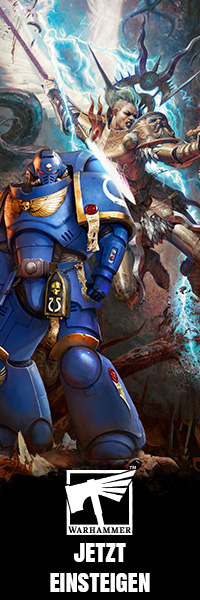

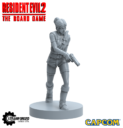
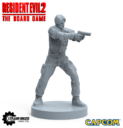

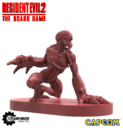





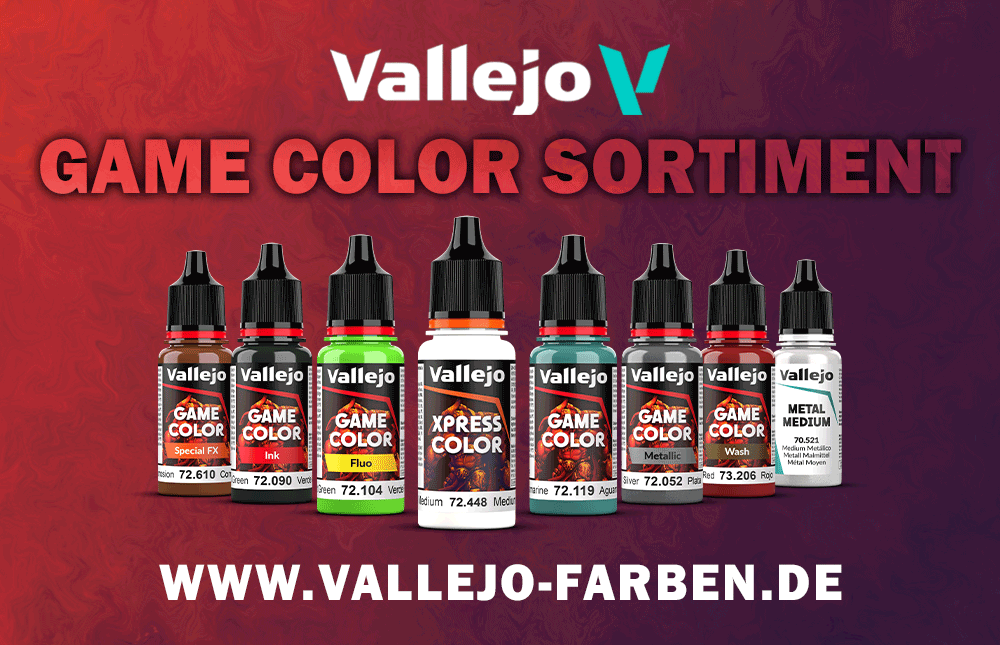
Die Optik scheint ja auf den Grafiken des Spiels aus den 90ern zu sein. Passt ja, wenn man sich irgendwie sich von Design her an dem Grundspiel orientiert. Ein blöder Nebeneffekt ist aber, daß die Karten sehr nüchtern/bieder wirken. Es muss ja nicht immer cmon-knallig sein, aber aktuell ist das alles extrem langweilig in meiner Wahrnehmung.
Ich bin mal gespannt. Interessant hört es sich schon an.
Die alten Grafiken zunehmen ist eine nette Idee, aber das ganze Kartenlayout sieht nicht gut aus. Das wirkt irgendwie billig und amateurhaft. Ich hoffe, dass das nur Platzhalter sind.
Ich finde die Spielgrafiken super aber ja das Layout ist hier das Problem. Einfach nur eine Grafik auf eine Karte klatschen reicht da nicht, so wirkt das zu steril.